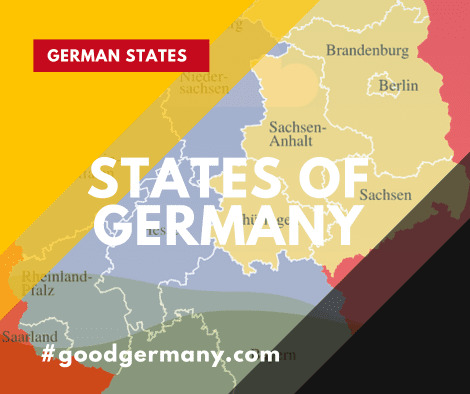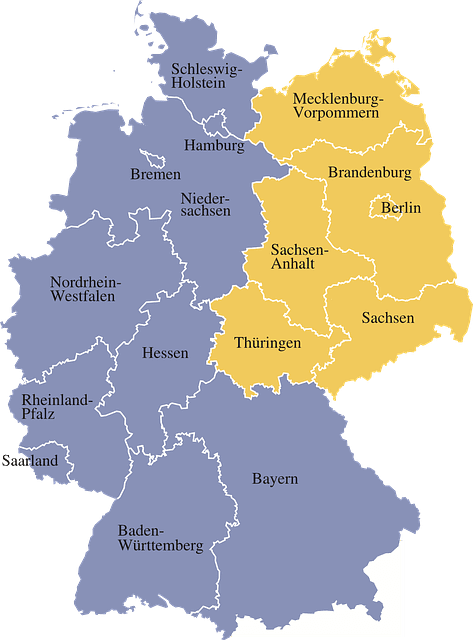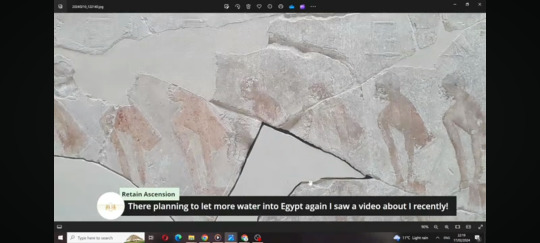#Berlin Metropolitan Area
Text
The Xavier School For Gifted Youth Has a Massive Waiting List; Where are you Sending Your Superpowered Progeny?
#cyberpunk#Xmen#Gay#Queer#LGBTQX#LGBQT+#ace#XMEN#Xmen are queer#veterans#And we process#piotr rasputin#kurt wagner#james howlett#kitty pryde#Storm#ororo munroe#nightcrawler#Brazil#Henry McCoy#Hank McCoy#Kurt Wagner#Expand#Shiro Yoshida#lgbtq#Let's lean into metaphor fam
16 notes
·
View notes
Text
Setting Blurb Map: Viceroyalty of Eurmerica

CorpEmp Macrocommunities:
Anglia et Cambria - Contains England, Wales, and the "Reconstructed Strathclyde" region of southern Scotland.
Arkassouri - A small Macrocommunity made up of Arkansas and. Missouri.
Benelux - A united Belgium, Netherlands, and Luxembourg. Less weed under Imperial rule.
Calizona - California (sans it largest three cities but most consider that an improvement), Arizona (with bits of New Mexico).
Cascadia - British Columbia, Idaho, Oregon, Washington. Once an anti-Imperial stronghold, now used to house veterans.
Deseret - Utah, with bits of its neighbors.
Dixica - Deep South and bits of Georgia, the Texans and Virginians cemented their alliance by conquering this area.
Eurmerican Arctic - Alaska, Yukon, NW Territory, Nunavut, and Greenland make up the homeland for the Eskaleut speaking peoples.
Gaelia - Ireland, Isle of Mann, Scotland (minus Strathclyde).
Germania - Germany, Austria, German Switzerland, Liechtenstein (plus bits of Poland and Czechia).
Grand State of Virginia - A reunited Virginia, Delaware, Maryland, and the Carolinas. Virginia was the first Warlord-era state to ally with Texas.
Greater Quebec - Quebec, bits of Ontario, Newfoundland and Labrador.
Ibero-Atlantic Islands - Azores, Canary Islands, Madeira.
Laurentia - The Rust Belt plus New Jersey.
New England - New England, the Maritime provinces, and eastern New York state. Another anti-Imperial bastion turned into veteran colonia.
Scandinavia - Denmark, Norway and Sweden (minus territory given to Eurasia's FennoSapmi).
Texan Tribal Federation - Texas, Oklahoma, and New Mexico. The homeland of CorpEmp's Rotthey dynasty.
The Plains - The American Midwestern states, and Canada's prairie provinces.
The West Latins - France, Italy, Portugal, and Spain. The Nouvelle Droite movement sought to reestablish the Roman Empire following WWIII. They managed to take the western half by the creation of CorpEmp.
Transappalachia - Kentucky and Tennessee. A Virginian vassal.
Non-Imperial Polities:
The Cordons Sanitaire - Berlin, Bremen, Chicago, London, Los Angeles, Toronto, and San Diego. These metropolitan areas were walled off and then used as "dumping grounds" for anyone that didn't want to be a part of CorpEmp. Rival political factions fight for control over each Cordon, but CorpEmp never allows them to have enough control to become a threat.
Green Consensus - Long Island. Eco-Socialists managed to takeover this Cordon Sanitaire during the War of 2100.
United Markets - Nevada, Seattle, and Vancouver. The Vegas casinos bribed the Texans to not invade their state, and MicroBucks were allowed to govern their own Cordon after Portland was given the Carthage treatment.
World Congress of Freedom - Iceland, San Francisco, Svalbard. These Cordons managed to get their shit together and wage war against CorpEmp in 2100 and force the CorpEmp into recognizing their legitimacy.
Macrocommunities with high Reserve presence - The Plains, Laurentia, Deseret.
Macrocommunitites with high Common Prosperity Coalition activity - Laurentia, Calizona, Anglia et Cambria, Benelux, West Latins.
8 notes
·
View notes
Text
“Sources from the “scientific-police complex” are scarce as perpetrators from the highest criminal police office burned almost all their files in the last weeks of the war when the Allied troops were approaching the Berlin and Brandenburg metropolitan area. Only a few collections of the personal files of the local criminal police stations can be found in archives today, as most of them were destroyed after the war or after the 1960s when investigations against the perpetrators were closed. Researchers consider this type of source to be a “key document for the genocide of Sinti and Roma.” Criminal police personal files are a “mirror image of police activity” and illustrate the adaptation of the criminal police to specific requirements and regulations regarding the treatment of Sinti and Roma over an extended period of time. The criminal police also created special registers such as a photograph register “Lichtbildkartei”) or fingerprint collections for “Gypsies.” Most of these collections have not survived, but some have been transmitted to archives.”
-- "Technocrats and their Tools of Genocide: The Scientific-Police Complex and the Genocide of Sinti and Roma under the Nazi Regime, 1938–1943", Theophile Leroy and Verena Meier, 2022
I think this is something that needs to be stressed when discussing the genocide of the Sinti and Roma; most archival evidence that it happened were burned by the Nazis at the end of the war or by the Germans after the war. I have first hand experienced with this as I was studying a small concentration camp where Romani women had (allegedly) been forcibly sterilized. I rang the archive department to ask them if they had some documents about it and they told me the Nazis had burnt must of it. I went there and only a handful of documents on the Romani detainee population remained. So many documents have been lost to history and we will never know the full scale of the Romani genocide because of it. And instead of acknowledging this historical reality, many ill-intentioned people will quote a lack of evidence to argue that this genocide never happened.
5 notes
·
View notes
Text
Scattered throughout Germany are collections of what look like tiny houses surrounded by well-kept gardens. But people don't live in these small structures with flourishing yards. These are allotment gardens — a take on community gardens also known as Kleingarten or Schrebergarten. Originally developed to facilitate health and wellness, these gardens are described by The Local as a "a concept, a goal, a way of life."
In the early 1800s during a strong period of urbanization when many people had moved to the cities for work, impoverished families often had difficulty finding enough to eat. Some churches, city administrators and factory owners offered to lease them community land for a small fee so that they could grow their own food. These became known as Armengarten, or gardens for the poor, according to DW.com.
As urbanization continued, Dr. Moritz Schreber, a doctor and teacher from Leibzig, was concerned that children raised in the city would suffer both physically and emotionally if they didn't have more outdoor experiences. He proposed the concept of playgrounds where everyone could get physical exercise and enjoy the outdoors. Just a few years after he died, the idea gained traction and the concept of Schrebergarten was named for him, reports the Local.
The early spaces were mostly play areas on the outskirts of town. But families quickly realized there was value in the land and also began planting gardens in their outdoor plots.
While the kids ran around and soaked in all that fresh air, the adults grew vegetables for the family. But there was downtime for them, too. They pulled up their chairs and talked or played cards. The gardens evolved into a hub for relaxation and social life for everyone in the family. The gardens also became known as Kleingarten ("small garden") or Familiengarten ("family garden").
Most of the plots were converted completely to family gardens by World War I, and those plots helped a hungry populace survive both world wars, reports German Girl in America.
As the popularity of the gardens grew, laws were passed to keep leasing fees reasonable. The plots of land were kept in the family, passed down from generation to generation as long as the fees were paid.
Many of the gardens were located in relatively undesirable areas where most people didn't want to live, like along railroad tracks, airports and even on both sides of the Berlin Wall. They were usually grouped together in colonies, forming communities.
A way of life
Though they are no longer a necessity, Kleingarten are now considered a luxury or, some say, a key pillar to a recreational way of life.
These days, there are about 1 million allotment gardens in Germany and 95% of them are occupied, according to a study by the German Institute for Construction, City and Space Research.
The average age of a garden association member is 56, a drop in about five years since 2011.
"The allotment garden system continues to have a permanent place in the green and open space system of cities and fulfills important social, ecological and urban planning functions," the study authors write. "The allotment garden is rejuvenating: the generation change is becoming more noticeable ... The main reason for this is the increased demand from young households, mostly families with children, who are also becoming more international. In the big cities, club members are more often younger than in the smaller cities."
And these younger people appreciate the opportunity to be outdoors.
"Overall, this also reflects an increasing need to become more involved in nature and environmental protection and to use, secure and make green and open spaces, especially in the metropolitan areas, as places of rest and relaxation," the researchers write.
Garden laws and waiting lists
Gardens now are often so much more than just a few veggie plants. They can be elaborate spaces with loads of flowers, water features, barbecue grills and even the occasional garden gnome. They are spots for people to relax and socialize and enjoy the outdoors.
But it's not easy to just grab a plot and start growing. There's often a waiting list. According to the BBC, Berlin's gardens have a waiting list of 12,000 people, and it typically takes at least three years to get a plot.
And as attractive as the gardens might be now, with their colorful flowers and home-like accouterments, there are national laws to control what goes on in the plots. The garden huts can't be too big or used as residences, according to DW.com, and at least one-third of the garden must be used to grow fruits and vegetables.
But for many, the balance of rules versus relaxation is worth it, as generations mingle in the gardens.
"The amount of work that goes into taking care of the garden also makes you appreciate what you're eating — and makes you realize what's in season," Paul Muscat, 32, of Wedding, Germany, tells the BBC. "Except for the parks, there’s no immediate escape from the urban environment. This offers a reprieve from that."
Updated February 22, 2020
2 notes
·
View notes
Note
How common are those hellish grid suburbs that urbanists like to post? I feel like anyone who's living there probably has the money to go to a city or different suburb, and if they're there it's probably for some reason besides money like safety or a local school.
How common are they where? In the U.S. they're very common. They're mostly found around big and mid-sized cities that have the economy to support them--you need somewhere for people to commute to, and a source of services like hospitals and shopping areas. Most U.S. Americans live in or near mid-to-large-sized cities:
As of April 2020, just more than 86 percent of Americans live in metropolitan areas, counties that include or are adjacent to major cities with populations of 50,000 or more, an all-time high.
(source)
Urbanization patterns are approximately similar in most developed countries these days, and tract suburbs aren't unknown in them, either: what to do with all the "ghost estates" (tract suburbs built during the real estate bubble) in Ireland was a pretty big issue after 2008. Areas of low-density development are part of the normal urban ecosystem everywhere (you can find them here in Berlin!), it's just that the U.S. and Canada build them to excess, and in the least useful ways, because zoning rules often make it difficult or impossible to build anything else.
17 notes
·
View notes
Text
The 16 States of Germany: Exploring the Diversity and Unity

Germany, renowned for its rich history, cultural heritage, and economic prowess, is a country that consists of 16 distinct states, each with its own unique character and charm. From the bustling metropolitan areas to the serene countryside landscapes, Germany showcases a harmonious blend of modernity and tradition. Let's embark on a journey to discover the 16 states that contribute to the vibrant tapestry of this remarkable nation.
Table of Contents
- Introduction
- Schleswig-Holstein: Where Land Meets Sea
- Bavaria: A Tale of Traditions
- Berlin: The Heart of Modernity
- Baden-Württemberg: Innovation and Greenery
- Saxony: Where History and Culture Converge
- Hamburg: Gateway to the World
- North Rhine-Westphalia: Industrious and Dynamic
- Lower Saxony: Nature's Abode
- Hesse: Where Urbanity Meets Heritage
- Rhineland-Palatinate: Vineyards and Beyond
- Brandenburg: Castles and Lakes
- Thuringia: Enchanting Landscapes
- Mecklenburg-Vorpommern: Coastal Beauty
- Saxony-Anhalt: Of Art and Architecture
- Saarland: Small yet Significant
- Bremen: A Tale of Two Cities
- Conclusion
- FAQs
- What is the significance of Germany's division into states?
- Which state is known for its Oktoberfest celebrations?
- What makes Berlin a unique capital city?
- Which state is famous for its automotive industry?
- Are the states of Germany culturally diverse?
Introduction
Germany's federal structure comprises 16 states, often referred to as Bundesländer. This decentralized system empowers each state to have its own constitution, government, and educational policies while collaborating on national matters.

Schleswig-Holstein: Where Land Meets Sea
Nestled between the North Sea and the Baltic Sea, Schleswig-Holstein is renowned for its stunning coastline, charming villages, and maritime heritage. Visitors are drawn to its pristine beaches, and the iconic port city of Kiel hosts the renowned Kiel Week sailing event.
Bavaria: A Tale of Traditions
Bavaria, famous worldwide for its traditional culture, picturesque landscapes, and iconic Oktoberfest, embraces both its history and innovation. The state boasts fairytale castles like Neuschwanstein and a thriving technology sector.
Berlin: The Heart of Modernity
The capital city, Berlin, stands as a symbol of unity and progress. Rich in history, it houses iconic landmarks like the Brandenburg Gate, while also being a haven for artists, entrepreneurs, and diverse cultures.
Baden-Württemberg: Innovation and Greenery
Known for its high standard of living, Baden-Württemberg combines technological innovation with natural beauty. It's home to global automobile companies and the enchanting Black Forest region.
Saxony: Where History and Culture Converge
Saxony's historic cities like Dresden and Leipzig are cultural treasures. With a legacy of classical music, ornate architecture, and cutting-edge research, Saxony is a dynamic hub of art and innovation.
Hamburg: Gateway to the World
Hamburg, a bustling port city, has a maritime legacy that extends to its modernity. Its famous harbor, impressive architecture, and vibrant nightlife make it a global hub of trade and culture.
North Rhine-Westphalia: Industrious and Dynamic
This economic powerhouse, known as NRW, encompasses major cities like Cologne and Düsseldorf. With a rich industrial history, it's a melting pot of creativity, business, and diverse communities.
Lower Saxony: Nature's Abode
Lower Saxony is blessed with natural beauty, boasting the Wadden Sea National Park and serene landscapes. Hannover, its capital, seamlessly blends urban amenities with a tranquil environment.
Hesse: Where Urbanity Meets Heritage
In Hesse, the metropolis of Frankfurt contrasts with charming historic towns like Heidelberg. It's a financial center with a touch of tradition, offering a balanced urban and rural experience.
Rhineland-Palatinate: Vineyards and Beyond
This wine-producing region showcases medieval architecture, particularly in its capital, Mainz. Rhineland-Palatinate's rolling vineyards, combined with cultural heritage, make it a visual and culinary delight.
Brandenburg: Castles and Lakes
Surrounding Berlin, Brandenburg is a nature lover's paradise. Its serene lakes, picturesque countryside, and a plethora of castles create an idyllic escape from the urban bustle.
Thuringia: Enchanting Landscapes
Thuringia's dense forests and charming towns inspired poets like Goethe and Schiller. Erfurt and Weimar are cultural hotspots, offering insights into Germany's intellectual history.
Mecklenburg-Vorpommern: Coastal Beauty
The Baltic Sea coastline defines this state, where seaside resorts and historic towns abound. Mecklenburg-Vorpommern is a haven for water sports enthusiasts and those seeking tranquility.
Saxony-Anhalt: Of Art and Architecture
Home to the Bauhaus movement, this state celebrates modern art and design. Saxony-Anhalt's cultural offerings extend to historic Magdeburg and the scenic Harz mountains.
Saarland: Small yet Significant
Saarland's picturesque landscapes and unique blend of French and German influences make it an intriguing destination. Its industrial heritage and natural beauty create a distinctive identity.
Bremen: A Tale of Two Cities
Bremen and Bremerhaven, two cities within this smallest state, offer maritime history and modern innovation. Bremen's UNESCO-listed market square and the German Emigration Center in Bremerhaven provide diverse experiences.
Conclusion
Germany's 16 states showcase a harmonious blend of traditions, innovation, nature, and culture. Each state contributes to the nation's identity, reminding us of the diversity that unites this remarkable country.
FAQs
- What is the significance of Germany's division into states? Germany's federal structure empowers states with autonomy while fostering unity on a national level.
- Which state is known for its Oktoberfest celebrations? Bavaria is renowned for hosting the world-famous Oktoberfest, a celebration of Bavarian culture.
- What makes Berlin a unique capital city? Berlin is a melting pot of art, history, and modernity, reflecting Germany's complex history and contemporary vitality.
- Which state is famous for its automotive industry? Baden-Württemberg, with cities like Stuttgart, is a hub of automobile manufacturing and technological innovation.
- Are the states of Germany culturally diverse? Yes, each state has its own distinct culture, traditions, and characteristics, contributing to Germany's rich diversity.
Read the full article
3 notes
·
View notes
Text
Zero Tuition, High ROI: Attract International Talent with German Master's Programs
Germany has established itself as one of the most attractive destinations for international students, particularly those pursuing master’s programs. The country's commitment to academic excellence, coupled with its innovative industries and research opportunities, is unrivaled. What makes it even more appealing is the concept of “zero tuition” at many public universities, allowing students to focus on their education without the burden of high fees. In this article, we will explore how German master's programs offer high returns on investment (ROI), making them a magnet for international talent.
Why Germany? A Global Hub for Higher Education
Germany’s position as an educational powerhouse is no accident. With over 400 universities and 20,000 study programs, the country has been a forerunner in both science and technology, attracting some of the world’s brightest minds.
Here’s why Germany stands out:
Free or Low-Cost Tuition: Public universities in Germany offer little to no tuition fees, even for international students. This means students only have to cover living expenses, drastically reducing the financial burden of obtaining a master’s degree.
Globally Recognized Degrees: German degrees are internationally respected, especially in fields like engineering, medicine, business, and social sciences. Graduates from German universities are highly sought after by employers worldwide.
Research and Innovation: Germany is home to world-class research institutions and boasts strong collaborations between academia and industry. Students have access to cutting-edge facilities, making it a dream destination for those interested in research-based programs.
Quality of Life: International students not only benefit from affordable education but also enjoy a high standard of living in cities like Berlin, Munich, and Hamburg. With extensive public transportation, student discounts, and affordable healthcare, Germany offers a balanced lifestyle for students.
Zero Tuition: Breaking Down the Financial Benefits
The financial model of many German public universities is one of their strongest selling points. While countries like the U.S., U.K., and Australia charge tens of thousands of dollars for master’s programs, Germany offers a more affordable alternative without compromising on quality.
No Tuition Fees
For many public universities in Germany, international students can attend for free. While some private institutions may charge fees, the costs are still significantly lower than in other Western countries. This “zero tuition” model allows students to graduate with minimal debt, increasing the long-term ROI of their education.
Affordable Living Costs
Although students are expected to cover their living expenses, these are relatively modest compared to other countries. The average cost of living for international students in Germany ranges between €800 and €1,200 per month, depending on the city. Even in larger metropolitan areas like Berlin and Munich, the cost of living remains competitive when considering the standard of living and available amenities.
Scholarships and Financial Aid
Germany offers a wide range of scholarships and financial aid programs for international students. Organizations such as the DAAD (German Academic Exchange Service) provide scholarships based on merit, financial need, and research interests, further reducing the financial burden on international students.
High ROI: Why German Master’s Programs Pay Off
Investing in a German master’s program yields exceptional returns, both in terms of career opportunities and personal growth. Let’s break down the key factors that contribute to this high ROI.
Access to Global Job Markets
Germany is home to numerous global corporations, including companies like Siemens, Bosch, BMW, and Volkswagen. Many universities maintain strong connections with these companies, allowing students to gain hands-on experience through internships, research projects, and collaborations. Graduating from a German university can open doors to job opportunities not just in Germany, but globally.
Stay-Back Visa and Path to Permanent Residency
Germany’s liberal visa policies further enhance the attractiveness of its master’s programs. After completing their studies, international students can apply for an 18-month job-seeker visa to find employment in the country. Once employed, graduates can apply for an EU Blue Card, a pathway to permanent residency. This long-term option is particularly appealing to international students looking to settle in Europe and build a career.
Competitive Salaries and Career Growth
Germany’s robust economy, especially in sectors such as engineering, IT, healthcare, and renewable energy, ensures that master’s graduates are well-compensated. The average starting salary for master’s degree holders in Germany ranges from €45,000 to €55,000 annually, depending on the field of study. Graduates in specialized areas like data science, artificial intelligence, and robotics can earn even higher salaries, making the investment in a German master’s program highly lucrative.
Language and Cultural Exposure
Although many master’s programs are offered in English, international students often take advantage of language courses to learn German. Proficiency in German can significantly boost a graduate's employability in Germany and other German-speaking regions, increasing their career prospects. Additionally, students gain cultural exposure and soft skills that are highly valued by employers in today’s globalized world.
Why Companies Should Partner with German Universities
Given the caliber of education and the strong emphasis on research and innovation, companies worldwide are increasingly seeking to collaborate with German universities. Here’s why partnering with these institutions can benefit organizations:
Talent Pool: Germany produces a highly skilled workforce, particularly in STEM fields. Companies can access this talent pool by partnering with universities for research projects, internships, and recruitment.
Innovation and R&D: Germany’s universities are at the forefront of research in technology, engineering, and healthcare. Collaborating with these institutions can provide companies with access to the latest advancements, helping them stay competitive in their respective industries.
Global Reach: German universities attract students from around the world. Companies looking to build a diverse workforce with international talent will find Germany to be an excellent recruitment hub.
Conclusion: Germany – The Smart Choice for International Talent
With zero tuition fees, a high standard of living, and excellent job prospects, German master’s programs present a high ROI for international students. They offer an education that is not only affordable but also globally recognized, making Germany a top destination for those seeking to advance their academic and professional careers.
For companies looking to attract top-tier talent, investing in partnerships with German universities and recruiting graduates from these institutions can yield significant returns. Whether you’re a student or a company, Germany provides opportunities for growth, innovation, and success.Ready to explore a master’s program in Germany? Start your journey today and unlock a world of possibilities!
0 notes
Text
Bringing the Flavors of India to Your Doorstep: Online Shopping Revolution
In recent years, Indian cuisine has transcended global boundaries, becoming a beloved part of the culinary landscape in Europe. The rich flavors, aromatic spices, and diverse dishes have captivated food enthusiasts across the continent, sparking a surge in demand for authentic Indian ingredients. As a result, the ability to Buy Indian Food Online has become increasingly important for both Indian expatriates and European nationals eager to explore the depth of India's gastronomic culture from the comfort of their homes.

Convenience of Buying Indian Food Online
For many, the journey of cooking authentic Indian meals begins with finding the right ingredients. The convenience offered by online platforms allows individuals to Buy Indian Food Online without the hassle of traveling to specialty stores, often located far from their residences. These platforms provide a wide array of products ranging from basic spices like turmeric and garam masala to more specialized items such as paneer and jaggery, all essential for a variety of Indian recipes.
Benefits of Online Grocery Shopping
Shopping online for Indian groceries offers numerous advantages. Customers can enjoy the luxury of browsing through extensive product catalogs with detailed descriptions and usage tips, ensuring they select the right products for their culinary needs. Additionally, online stores often provide recipes and meal ideas, which can be particularly helpful for those new to Indian cooking. The online model also facilitates price comparison and regular updates on new arrivals and discounts, enhancing the shopping experience and providing value for money.
Expanding Reach with Indian Grocery Online Europe
The scope of online Indian grocery shopping is not limited to specific regions but extends across Europe. The concept of Indian Grocery Online Europe has revolutionized how Indian food enthusiasts across the continent shop for their groceries. This service ensures that even those living in less populated or rural areas have access to the same variety of Indian groceries as those in major cities. Whether it's a small town in the Alps or a bustling metropolitan area like Berlin, Indian groceries are just a click away.
Challenges and Opportunities in Online Indian Grocery Shopping
While shopping for Indian Grocery Online Europeoffers convenience, it is not without challenges. Logistics, such as maintaining the freshness of perishables during transit and managing timely deliveries over vast distances, are significant concerns. However, these challenges also present opportunities for innovation in packaging and delivery logistics, making online grocery shopping even more accessible and reliable.

Conclusion
The trend to buy Indian food online and the growth of Indian grocery online Europe reflect a broader shift towards digital solutions to meet the evolving culinary interests of a diverse population. For those looking to indulge in the rich flavors of Indian cuisine or add some spice to their cooking, spicevillage.eu provides a comprehensive platform to access a wide range of authentic Indian groceries online. With just a few clicks, everyone from culinary novices to seasoned chefs can bring the essence of Indian cooking right into their European kitchens, bridging cultures and creating delicious dishes at home.
Blog Source URL :
0 notes
Text
Top Destinations for Business Travel in 2024

For Travel Related Queries: www.sarvodayaholiday.com
In 2024, business travel is making a big comeback, and professionals around the world are packing their bags for important meetings, conferences, and networking events. If you're a business traveler looking for the best places to combine work and a bit of leisure, here are some top destinations to consider this year.
1. Singapore
Singapore is a major hub for business in Asia. Known for its efficiency, safety, and cleanliness, it's an ideal place for international conferences and business meetings. The city's Marina Bay Sands Convention Center and Suntec Singapore Convention & Exhibition Centre are top-notch facilities for any business event. Plus, after your meetings, you can explore the vibrant food scene, visit the iconic Gardens by the Bay, or take a relaxing walk around the Marina Bay area.
2. Dubai, UAE
Dubai has quickly become a favorite for business travelers. Its strategic location makes it a perfect meeting point for professionals from Europe, Asia, and Africa. The Dubai World Trade Centre hosts numerous international events, and the city offers luxurious hotels and excellent services. In your free time, you can visit the Burj Khalifa, shop at the Dubai Mall, or go on a desert safari.
3. New York City, USA
New York City is the heart of global finance and business. With its endless skyscrapers, including the iconic One World Trade Center, and numerous top-notch hotels and conference centers, it's a go-to for business events. When you're not working, you can enjoy a Broadway show, visit Central Park, or explore world-class museums like the Metropolitan Museum of Art.
4. Tokyo, Japan
Tokyo is a city where tradition meets innovation. It's a leading center for technology and business, making it a prime destination for professionals. The Tokyo International Forum and various other venues host significant global events. Don't forget to enjoy sushi at Tsukiji Fish Market, visit the historic Senso-ji Temple, or experience the bustling nightlife in Shinjuku.
5. Berlin, Germany
Berlin is a hub for startups and innovation in Europe. Known for its creative industries and dynamic tech scene, the city offers great venues like the Berlin Congress Center. After work, you can explore the rich history at the Berlin Wall, enjoy the vibrant art scene, or relax in one of the many beer gardens.
6. Hong Kong
Hong Kong is another top destination in Asia for business travelers. The Hong Kong Convention and Exhibition Centre is a popular venue for international events. The city's unique blend of Eastern and Western cultures makes it an exciting place to explore. Take a tram ride to Victoria Peak for stunning views, visit the bustling markets, or enjoy a meal in one of its world-class restaurants.
7. San Francisco, USA
San Francisco, located in the heart of Silicon Valley, is perfect for tech industry professionals. The Moscone Center hosts many major tech conferences and conventions. When not working, you can visit the Golden Gate Bridge, explore Alcatraz Island, or take a stroll in Fisherman’s Wharf.
8. London, UK
London remains a central hub for international business. The city's ExCeL London and The Business Design Centre are among the best for hosting events. After your meetings, you can visit historical sites like the Tower of London, take a ride on the London Eye, or enjoy a show in the West End.
9. Shanghai, China
Shanghai is a major business center in China, known for its impressive skyline and financial district. The Shanghai World Expo Exhibition and Convention Center hosts numerous international events. In your downtime, stroll along The Bund, visit the Shanghai Tower, or relax in Yu Garden.
10. Sydney, Australia
Sydney is not just beautiful but also a growing hub for business, especially in the Asia-Pacific region. The International Convention Centre Sydney (ICC Sydney) is a world-class venue. Enjoy the stunning Sydney Opera House, take a walk along Bondi Beach, or explore the Royal Botanic Garden when you have some free time.
Conclusion
Business travel in 2024 is not just about work; it's also an opportunity to experience new cultures, cuisines, and sights. These top destinations offer excellent facilities for business events and plenty of activities to enjoy in your free time. So, pack your bags and get ready for a productive and exciting year of business travel!
#adventure#tourism#travel#travel agency in india#travel agency#travel destinations#traveling#trip#business#meeting#business trip#business travel
0 notes
Text
Accommodation in Germany for Indian Students
Overview:Finding accommodation in Germany can be both exciting and challenging for international students. With options ranging from student dormitories and shared apartments to private rentals and homestays, there's something to suit every preference and budget. Many universities offer student housing options, providing a convenient and social living environment. Alternatively, students can explore rental markets in popular cities like Berlin, Munich, and Frankfurt, where they can experience German culture firsthand. It's essential to start the accommodation search early, as demand can be high, especially in metropolitan areas. Overall, with careful planning and research, students can find comfortable and affordable accommodation to enhance their experience of studying in Germany.
Types of Accommodation In Germany
Student Dormitories: Managed by universities, offering affordable shared rooms or studio apartments with communal facilities.
Shared Apartments (WG - Wohngemeinschaften): Renting a room in a flat shared with other students or professionals, sharing common areas like kitchen and bathroom.
Private Rentals: Renting an entire apartment or house independently, providing more privacy but usually higher costs.
Homestays: Living with a local family, offering cultural immersion and a supportive environment for international students.
Temporary Accommodation: Hostels, guesthouses, or short-term rentals ideal for newcomers while searching for long-term housing.
On-campus Accommodation: Some universities offer on-campus housing options, including student residences or apartments within university premises.
Cost of Accommodation in Germany
The cost of accommodation in Germany varies significantly depending on factors such as location, type of housing, and amenities. In general, students can expect to pay between €300 to €600 per month for shared accommodation or student dormitories in smaller cities or rural areas. However, in larger cities like Berlin, Munich, or Frankfurt, prices can be higher, ranging from €400 to €800 or more for similar accommodation. Private rentals typically come with higher price tags, ranging from €500 to €1000 or more per month, depending on the size and location of the property. Overall, while living costs in Germany can be relatively affordable compared to other European countries, it's essential for students to budget accordingly and explore various accommodation options to find the best fit for their needs and budget.
How to Find Accommodation In Germany:
University Resources: Check with your university's international office or housing department for information on student dormitories, on-campus housing, or housing assistance programs.
Online Platforms: Utilize popular websites and platforms like WG-Gesucht, Immobilienscout24, or Studenten-WG to search for shared apartments, private rentals, or roommates.
Social Media: Join Facebook groups or forums specifically dedicated to housing in Germany, where students often post listings for available rooms or apartments.
Local Newspapers: Check classified ads in local newspapers or community bulletin boards for rental listings, especially in smaller towns or rural areas.
Conclusion:
In conclusion, finding accommodation in Germany presents a diverse range of options suited to various preferences and budgets. From student dormitories and shared apartments to private rentals and homestays, students have ample choices to explore. While costs vary depending on location and type of housing, it's crucial to start the search early and consider factors such as proximity to university, amenities, and overall affordability. With careful planning and research, students can secure comfortable and suitable accommodation to enhance their experience of studying in Germany.
0 notes
Text
Development of the Relaxed Eating Area in Germany

The relaxed eating area in Germany has encountered critical development lately, reflecting more extensive patterns inside the country's dynamic food service market. With an emphasis on giving a casual climate, quality food, and sensible costs, relaxed feasting cafés have caught the interest of a different segment, from families to youthful experts. This development is driven by a few key factors that are reshaping the German food service market.
Moving Shopper Inclinations
One of the fundamental drivers behind the development of the relaxed eating area in Germany is the changing inclinations of buyers. There is an observable shift towards more casual feasting encounters that offer superior grade, yet reasonable food. German shoppers are progressively searching for feasting choices that join accommodation with an agreeable air. This pattern is a serious area of strength for especially more youthful socioeconomics who focus on experience and worth over proper eating settings.
Monetary Elements
Germany's vigorous economic plays had an essential impact in the extension of the relaxed eating area. Expanded discretionary cash flow among the working class has permitted more individuals to feast out consistently. Besides, the generally elevated expectation of living in metropolitan regions has upheld the multiplication of easygoing eating foundations. Urban areas like Berlin, Munich, and Hamburg have become focal points for new eatery openings, taking special care of the two local people and travellers looking for different culinary encounters.
Advancement and Enhancement
Advancement is at the core of the easygoing eating area's development. German restaurateurs are embracing new ideas and expanding their contributions to meet the advancing preferences of customers. This incorporates the presentation of combination foods, wellbeing cognizant menus, and the consolidation of privately obtained fixings. The accentuation on maintainability and moral feasting rehearses additionally reverberates well with the cutting edge German burger joint.
Effect of Innovation
Innovation has likewise assumed a significant part in the area's development. The ascent of food conveyance applications and online reservation stages has made relaxed feasting more available than any other time. Numerous eateries have utilised virtual entertainment and computerised showcasing to contact a more extensive crowd, upgrading their perceivability and drawing in new clients. Moreover, progressions in kitchen innovation have smoothed out tasks, permitting eateries to keep up with exclusive expectations of service and food quality.
Extension of Worldwide Chains
The passage and extension of worldwide relaxed eating anchors have added to the area's development in Germany. Brands like Vapiano, L'Osteria, and Five People have effectively infiltrated the market, offering German customers a sample of worldwide cooking styles. These chains carry with them laid out plans of action and promote methodologies that have been successful in speaking to a wide crowd.
Difficulties and Future Standpoint
Regardless of the positive development drifts, the relaxed feasting area in Germany faces a few difficulties. The business is exceptionally cutthroat, with new cafés continually arising. Furthermore, rising work and food costs represent a test to keep up with benefits. Notwithstanding, the area's versatility and flexibility propose a promising future.
The eventual fate of the relaxed feasting area in Germany looks brilliant, with advancement and buyer driven approaches expected to drive further development. As the German food service market keeps on developing, relaxed feasting foundations will assume a crucial part in moulding the country's culinary scene, offering different and energising eating encounters for all.
All in all, the development of the easygoing feasting area in Germany is a demonstration of the German food service market. With changing customer inclinations, monetary strength, development, and innovation driving this extension, the relaxed eating industry is strategically situated to proceed with progress. Whether it's partaking in a generous feast with family or a light meal with companions, relaxed eating in Germany offers something for everybody, making it a basic piece of the country's lively culinary scene.
0 notes
Text
RENT REBELS – Resistance against the sell-out of the city
A documentary by Gertrud Schulte Westenberg and Matthias Coers

BERLIN In the last years the capital has changed a lot. Flats that once were unattractive are now being used as secure investment objects. The transformation into owner-occupied flats and massive rent increases become an everyday phenomenon. The visible tenant protests in the vibrant metropolis of Berlin are a reaction to the growing shortage of affordable housing.
The movie is a kaleidoscope of the tenants’ struggles in Berlin against their displacement out of their neighbourhood communities. Ranging from the occupation of the Berlin town hall to a camp at Kottbusser Tor, the organised prevention of evictions and the struggle of senior citizens for their community center and age-appropriate flats, a new urban protest movement is on the rise.
A documentary by
Gertrud Schulte Westenberg and Matthias Coers
D 2014 | 78 min. | German with English, Spanish, French, Italian, Greek, Czech, Polish, Romanian, Kosovar, Turkish, Farsi subtitles
Contact: [email protected] | +49 172 8925054
Cinema trailer:
youtube
Background information and reception:
To date, the movie RENT REBELS has been screened more than 200 times in Berlin cinemas. Furthermore, there are other screenings with film discussions in cooperation with neighborhood initiatives, associations, institutions and political parties - up till now around 130 events in 50 cities.
In the media, the film has been discussed and commented from alternative to bourgeois press, from homeless persons’ publications, social federations’ papers or the Federal Head Office for Political Education to a speech given by Germany’s justice minister.
The film lets the tenants speak with their competencies and skills, their critique and efforts against sheepishly accepting the shortage-producing housing policies and the scarcity of the housing market.
The movie shall encourage the city dwellers not to surrender to feelings of powerlessness but to confidently take part in the shaping of their neighborhoods, areas and the city itself.
Up until the present moment, the independently produced film has been chosen for seven international film festivals, most recently for the Arquitectura Film Festival 2015 in Santiago, Chile.
At events in Berlin with tenant initiatives and the Heinrich Böll Foundation, in Munich with neighbourhood groups and the Rosa Luxembourg Foundation or in Moscow with media activists and the Goethe Institute, the filmmakers went into discussion to analyze the local and international questions of housing with the interested audience.
During screenings in a wide variety of venues, such as the faculty of architecture at the University of Naples, the Royal Geographical Society in London, the Left Forum in New York and the Urbanize Festival in Vienna, it has become apparent that the problems on the Berlin and German housing market are very little known. The same goes for the commitment of its tenants and city dwellers, despite the fact that the housing question has prompted extensive social action in many regions, metropolitan areas and cities.
0 notes
Text
Traveling in Europe Germany
Potsdam on the River Havel
A city in Germany
The interesting city of Potsdam, Germany borders the German capital Berlin and is part of the Berlin/Brandenburg Metropolitan Region. It is the capital of the federal state of Brandenburg. The city is located in a lovely area of lakes and woodlands. The Prussian rulers built many palaces and gardens and created the architectural style of Potsdam…

View On WordPress
0 notes
Text
Excellent pictures taken at the Neues Museum of Berlin by a young man on YouTube called The King's Monologue. It's a Livestream called The Neues Museum of Berlin BLEW MY MIND (Pts 1 and 2). He makes very scrupulous observations that many brush over or block out. At the bottom of this compilation is his trip to the Louvre Museum in Paris reveal some shocking rarities.

color variation in males from User, Elephantine, dynasty 18.
Whole scene
https://www.archaeology.wiki/wp-content/uploads/2014/03/elephantine-tomb.jpg

.

.

.

.

.

Early dynastic period

Early era

.


Roman era

. woman just as dark reddish brown as the man

A lady from Antigua informed him that the style is called sisterlocks in modern times. These hairstyles were worn in West and Central Africa as well. See Diop's statement in the link about traditional hair of women in Senegal before the 1930s, both natural and wig (only seen in non Islamic areas after that time)...
1
https://www.tumblr.com/shwat2013/680165437249585152/whether-wig-or-not-i-think-people-sometimes?source=share. .
2
Wolof girl Senegal 1800s
a
https://64.media.tumblr.com/a236b85b80a40ea0690388ff73d5decc/c0bc9aed5175f391-df/s640x960/2ec47a43c894be96d47a61bc4ca79f771a80e1c4.jpg .
b
https://commons.wikimedia.org/wiki/File:Senegal-thioup-bazin.jpg#mw-jump-to-license
3
Just like ancient Egypt, the same wig form is traditionally worn in Nambia, Congo, Angola (of old), East Africa etc. Also worn naturally
link

.

. Sahure 5th dynastic period

Early period

Early period


Have to point out that these are actual faces of Akhenaten and Nefertari because it's taken from a cast mold. THIS MEANS YOU'RE LOOKING AT THEM. See museum link below picture for more on this technique of sculptor Thutmose. As we see the museum label once informed us that it's one of the plaster molds, but now just says portrait heads. The following picture is not from the YouTuber

The following description is from the Egyptian Museum in Berlin, about one plaster cast mask (Inv.-No. ÄM 21356), but it really speaks on the technique of all portraits like it of the era. Most are from the ancient artist Thutmose of the Achet-Aton (today called Amarna), in Middle Egypt, which was the capital of Egypt during the reign of Akhenaten and Nefertiti. It reads… This portrait study gives a unique view of the work technique of the artist; first a form was taken directly from the subject"s face and a gypsum copy was made from the mould. The copy was then finished by the sculptor in various details, especially the eyes since these had to be closed when the mask was taken from the face. In these rare instances we are directly confronted with 'real' people even if we do not know their names or anything else about them.
Scroll to Mask from Amarna Portrait of a Man.
http://www.egyptian-museum-berlin.com/c52.php
To see more actual faces from cast molds (rare), scroll down to "A few more every day Egyptians of the Amarna period", near bottom of the compilation in this link
https://www.tumblr.com/shwat2013/677380292714037248/amenhotep-iii-at-the-new-york-metropolitan-museum?source=share
picture with old museum label
https://www.reddit.com/media?url=https%3A%2F%2Fi.redd.it%2F3q2tykijo0da1.jpg.

In mythology, Memnon was a king of Aethiopia (Sudan in this case) and son of Tithonus and Eos. As a warrior he was considered to be almost Achilles' equal in skill. During the Trojan War, Here, he is compared to Akhenaten
Princess
link
18th dynasty man from Louvre

link

.Akhenaton on the left and a Nubian at the Flinders Petrie Museum of archeology, London, England on the right

This is a more of a stylized "artist conception on the left". We can see on the actual face from the sculptor studio on the right, he really didn't have a straight pointed nose...but rather more rounded, wide and flat. Strangely, I can see the faint character of the real person in the stylized conventional portraits
..

. Tiye

.Tiye or a relative

.

. hieroglyph for face

. Amenenehat III
.

.
More from the YouTuber. This time at the Louvre Museum (2 parts)
Part 1
Ink
Part 2
link
Clean, clear and unadulterated images from the video "MOST BEAUTIFUL NON-ROYAL TOMBS! WESTERN THEBES (LUXOR) EGYPT", as she walks through... These are wonderful and unbias. There's no way you can see these and not at least ask yourself... are these the people of the Aswan Elephantine area who lean more "black" in appearance
Video link
Be sure to stop at the bottom where it says "More from @afcnamrcn23". Don't be distracted by the pictures and links under that. They will occur again so that you can continue with the main post in sequence.
0 notes
Text
Switzerland as a Location for Conferences and Conventions, European Study Abroad, and Wedding events
Europe's varied landscapes, cultures, and experiences make it a perfect setting for travelers searching for brand-new and amazing encounters. Europe is a magical location that can be utilized for a wide range of purposes, from business trips to investigating educational travel alternatives to thinking about a wedding event in Switzerland. In this blog site, we'll guide you through all of these awesome possibilities, opening the door to a world of enduring memories.
European MICE Travel Itineraries for Company Success
Europe is an ideal destination for meetings, rewards, conferences, and exhibitions (MICE) that are prevalent in the business world. Europe provides a variety of exciting settings for organization conferences, from the stress of London to the tranquility of the Swiss Alps. Find state-of-the-art convention centers, five-star hotels, and stress-free occasion planning in a few of the world's most historic cities.
Picture holding your next important event in a magnificent European metropolitan areas like Paris. Under the watchful eye of the Eiffel Tower, your group might develop brilliant ideas while breathing in the city's intoxicating creative vibe. Then, when you've achieved your goals, you might commemorate with a journey to the Louvre or a cruise down the Seine. Europe's MICE tour is the ideal method to offer your group a boost of motivation and imagination without compromising enjoyable.
Student Travel Europe: Please Your Curiosity As A Trainee
Trainees looking to extend their views can think about studying in Europe, which is a veritable treasury of information, history, and culture. There is a world of discovering out there for curious young minds to explore, from the ruins of Rome to the tech centers of Berlin. The hostel system and the Eurail Pass make it easy to go to lots of cities in Europe on a spending plan, making Europe a great location to study abroad.
Picture yourself draining centuries of knowledge at Oxford's libraries or getting lost in Barcelona's dynamic street art scene, where art and culture collide. Europe is a treasure trove for students aiming to widen their horizons and get lifelong memories and skills.
Destination wedding in Switzerland: Love and the Sensational Swiss Alps
The Swiss Alps provide a picture-perfect setting for a wedding event, and the location's crystal-clear lakes and quaint towns will act as your guests and witnesses. Wedding event venues in Switzerland can be as distinct as the couple marrying, with possibilities ranging from fairy tale castles to rustic mountain lodges and even beautiful lakeside settings.
0 notes
Link
0 notes
